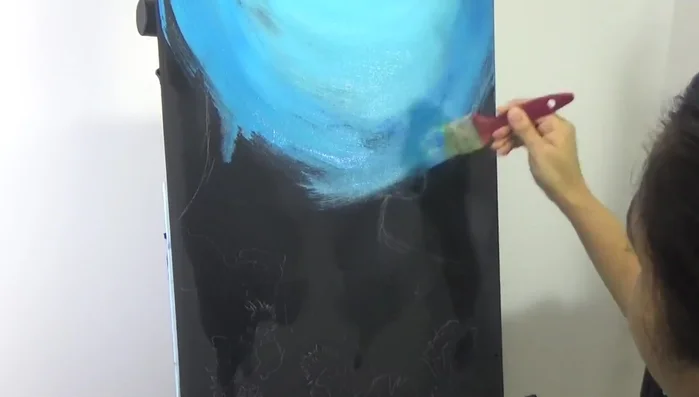Dive into a vibrant underwater world and unleash your inner artist with this stunning coral reef painting tutorial! Coral reefs, teeming with life and bursting with color, are a captivating subject for any painter, regardless of skill level. This guide offers a unique opportunity to capture the breathtaking beauty and intricate detail of these underwater ecosystems on canvas, transforming your artistic vision into a tangible masterpiece. Forget the limitations of photographs; learn to create dynamic depth, radiant hues, and the mesmerizing textures that define a thriving coral reef.
Prepare to be amazed as we guide you through each stage of the painting process, from sketching the foundational shapes to layering vibrant colors and adding the final, exquisite touches. This step-by-step guide will equip you with the techniques and confidence to create your own breathtaking underwater scene, leaving you with a piece of art that truly captures the magic of the ocean's depths. Let's begin!
Preparation and Safety Guidelines
- Acrylic paints (Taylor blue, cerulean blue, aqua green, black, white)
- 1-inch paintbrush
- Soft round brush
- Stiff round bristle brush
- General's white charcoal pencil
- Black canvas (optional)
- Coral reefs are delicate ecosystems. Avoid touching or disturbing the coral while painting. Even a small touch can damage the delicate organisms.
- Always check local regulations and obtain necessary permits before painting any artwork on or near a coral reef. Unauthorized painting may be illegal and harmful to the environment.
- Use only environmentally friendly, non-toxic paints designed for underwater use to minimize harm to marine life and the reef environment.
Step-by-Step Instructions
Prepare the Canvas
- Create a U-shaped background gradient. Mix Taylor blue, aqua green, and white. Apply in a flattened U-shape, lighter towards the top and darker (more blue) towards the bottom, transitioning to black at the very bottom.

Prepare the Canvas Sketch the Reef
- Sketch the coral reef scene. Once the background is dry, use a white charcoal pencil to sketch the coral reef, referencing various pictures for inspiration.

Sketch the Reef Paint Background Elements
- Paint distant corals. Use a mix of black and blue to create stem-like structures for distant corals. Use a soft round brush for lines and a damp bristle brush to smudge edges for a soft blend.
- Paint the mossy rock. Lay down a dark blue-black base. Dab paint with a bristle brush to create texture for the moss.
- Paint distant corals on the right side. Repeat the method used on the left side.



Paint Background Elements Paint Sponges and Corals (Small)
- Paint small sponges. Create a darker purple-blue background. Add smaller sponges with a mix of blues, aqua green, and white. Vary the background color (purples, browns) and add yellow-white highlights.
- Paint dried corals. Add hints of dried corals using muted colors.


Paint Sponges and Corals (Small) Paint Sponges and Corals (Large)
- Paint the large flower-like sponge. Lay down a purple-blue-black base. Create white dots with various colors mixed in. Once dry, tint with watery mixes of different colors (browns, yellows, purples, blues) to blend.
- Paint larger sponges. Apply base layers of browns, purples, and blues. Create outward strokes with a brush, then add lighter versions of the same colors using a flat brush for inwards strokes.


Paint Sponges and Corals (Large) Paint Nano Cubes
- Paint nano cubes (small corals). Use a variety of bright and muted colors (purples, reds, aqua greens, Taylor blue), layering and creating striations for texture. Don't fully blend colors.

Paint Nano Cubes Paint Rocks
- Paint rocks. Use various browns and muddy colors for a simple rock structure.

Paint Rocks Paint Additional Details
- Paint mossy structures. Use bright aqua colors for highlights and duller greens and purples for the background to create a sense of depth.
- Paint branch-like structures. Paint thin branches at the tips and thicker ones at the base.
- Paint tube-like sea animals. Use muted pinks and purples for the tube structures, adding tiny flower-like details at the tips.
- Paint the final tubular sponge. Apply a gray-white base first before adding brighter green, blue, and gray layers to create depth and texture.




Paint Additional Details
Read more: 7 Top Paint Color Trends for 2024: A Complete Guide with Free Downloadable Resource
Tips
- Work quickly with acrylic paints because they dry fast.
- Use a reference photo for accuracy.
- Focus on contrast to make your painting more vibrant and engaging.
- Use muted colors for a realistic underwater effect. Don't overuse bright colors.
- Vary the textures and colors to create visual interest without overwhelming the viewer.














